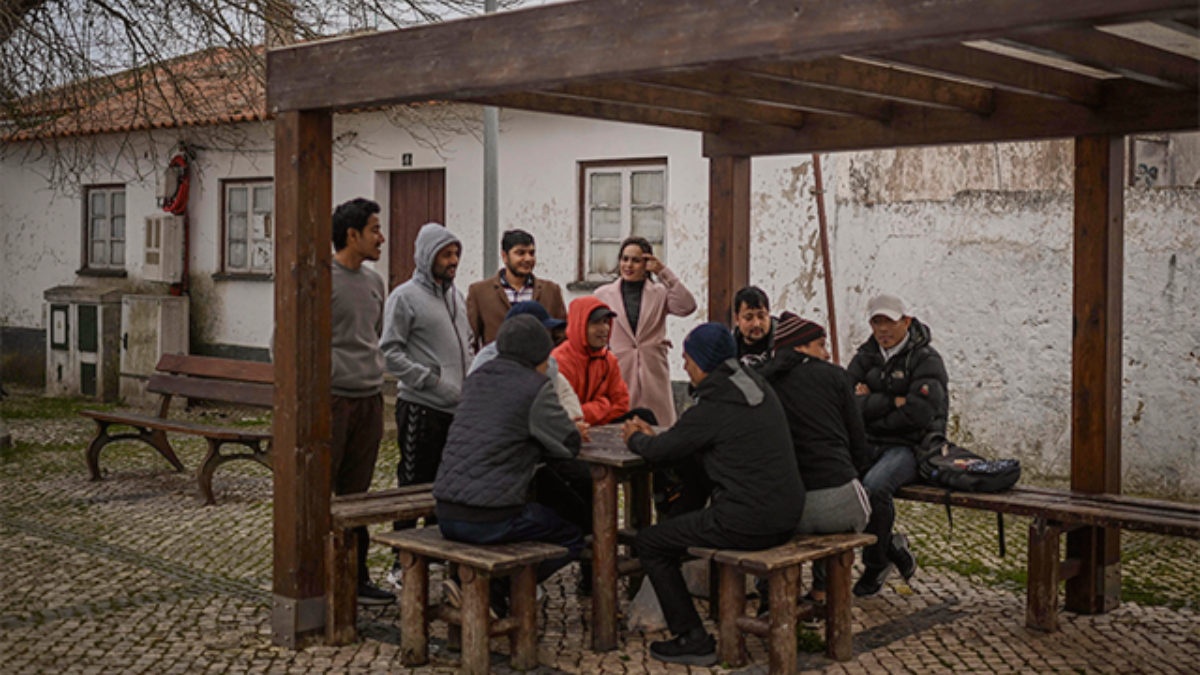The increase in the number of immigrants in Portugal is filling the Social Security coffers. Last year, contributions from foreign workers generated a positive balance of over 2,194 million euros, a surplus generated by the difference between the value of discounts for the Social Security system and the social benefits received.
In 2023, close to 483.3 million euros were allocated in social benefits, mainly in the areas of unemployment, family benefits and parental benefits, the Ministry of Labour, Solidarity and Social Security revealed to the media. Contributions reached 2,677 million euros, including discounts from both the employer and the employee
Portugal Immigrant Communities
Brazilians, the largest immigrant community in Portugal, contributed 1,033 million euros to Social Security, accounting for 38.6% of the total contributions from foreign workers.
Also Read: Neo-Nazis at Lisbon Forum: Assembly President Urged to Explain
This marks a 54% increase compared to 2022. Following Brazilians, Indian citizens contributed 168.4 million euros, a significantly smaller share.
Immigrants from Nepal contributed 102.9 million euros, while those from Spain contributed 102.8 million euros. Rounding out the list of the largest contributors were Cape Verdean immigrants, with 88.8 million euros.
These five nationalities were responsible for 56% of the total contributions of foreign workers to Social Security in 2023. However, not all of them are in the top 5 foreign communities residing in Portugal.
Immigration Trends and Residence Permits

The latest migration statistics report from Agency for Integration, Migration and Asylum (AIMA) shows that Portugal had 1,044,606 foreign residents with a residence permit in 2023. This is an increase of 3.6% increase from the last year. The population consists of the following countries:
- Brazilians: 368,449 citizens
- Angolans: 55,589 citizens
- Cape Verdeans: 48,885 citizens
- British: 47,409 citizens
- Indians: 44,051 citizens
The vast majority of these immigrants are in a potentially active situation.
- More than 80% are between the ages of 20 and 65.
- Young people (up to 19 years old) make up 11.6%.
- The population over 65 years old represents 7.9%.
Immigrant Workforce in Key Economic Sectors
The flow of migrants from Brazil also increased last year. According to the AIMA document, 328,978 residence permits were granted, more than double the number issued in 2022. Brazilian citizens accounted for almost half of the residence permits granted to live in Portugal, with 147,262 permits issued. Following at a considerable distance are:
- Angola: 24,374 permits
- Cape Verde: 14,623 permits
- São Tomé and Príncipe: 14,504 permits
- India: 12,185 permits

Furthermore, AIMA reports that 85% of the new permits went to people of working age.
The increase in migration was driven by Residence Permits for citizens of the Community of Portuguese-Speaking Countries (CPLP), which made up 45.3% of the new permits granted last year. Brazilians obtained 108,232 CPLP permits, further strengthening the migratory movement.
However, there was also strong growth among citizens of other Portuguese-speaking countries, though not at the same scale. Angolans, for instance, were the second-largest group to receive CPLP residence permits, with 15,750 permits granted.
- There was a 195% increase in the granting of residence permits to people from South America.
- A 210% increase was observed among applicants from Africa.
It should be noted that there are still around 400,000 pending applications for regularization.
Wage Discrepancies and Challenges
Various economic sectors, particularly construction, tourism, and agriculture, drive the arrival of immigrants. The Portuguese Farmers’ Confederation has already deemed it essential to hire foreign workers to address the workforce shortage. Last month, the president of the Portuguese Tourism Confederation stated that the workforce shortage is a reality.
Francisco Calheiros said in his speech during Chega’s parliamentary sessions:
It has been overcome by immigration, and I believe there is no other way to do it.
The construction sector has also turned to immigration to address the workforce shortage. In fact, the president of AICCOPN (the sector’s association) stated that the end of the expression of interest mechanism has added to the challenges.
This exceptional regime previously allowed foreigners to enter Portugal and apply for a residence permit afterward.
This need for foreign workers seems at odds with the appreciation of their work. Although no study on the average salary of these workers in 2023 has been published yet, we can reasonably assume that inequality exists among professionals with lower qualifications.
The latest annual report from the Migration Observatory reveals that foreign workers with lower qualifications receive lower salaries than Portuguese workers in the same situation. The study indicates the following differences in salaries in 2021:
- -4.1% for semi-skilled foreign workers
- -3.4% for unskilled foreign workers
- -4.6% for interns, trainees, and apprentices
Read More About: Portugal Population Highest Since 2015 As Number Of Immigrants Increase By 95% In 2 Years
The document also states:
There is an overrepresentation of foreign workers in activities with lower qualification levels, and a lower proportion of foreign workers in activities with higher qualification levels.
Foreigners receive a lower monthly base salary than Portuguese workers that is on average -6.7% in 2020 and -5.3% in 2021.

Human Trafficking In Portugal
The Annual Internal Security Report shows a 158% increase in human trafficking cases, primarily related to labor exploitation, and a 298% rise in investigations into aiding illegal immigration.
Of the human trafficking cases, 84% involve labor exploitation, with industries like forestry, fishing, agriculture, and football most affected.
Foreigners with higher qualifications now earn more than Portuguese workers. In 2021, their base salaries were:
- +29.6% for senior managers
- +15.3% for middle managers
- +59.3% for highly qualified professionals










